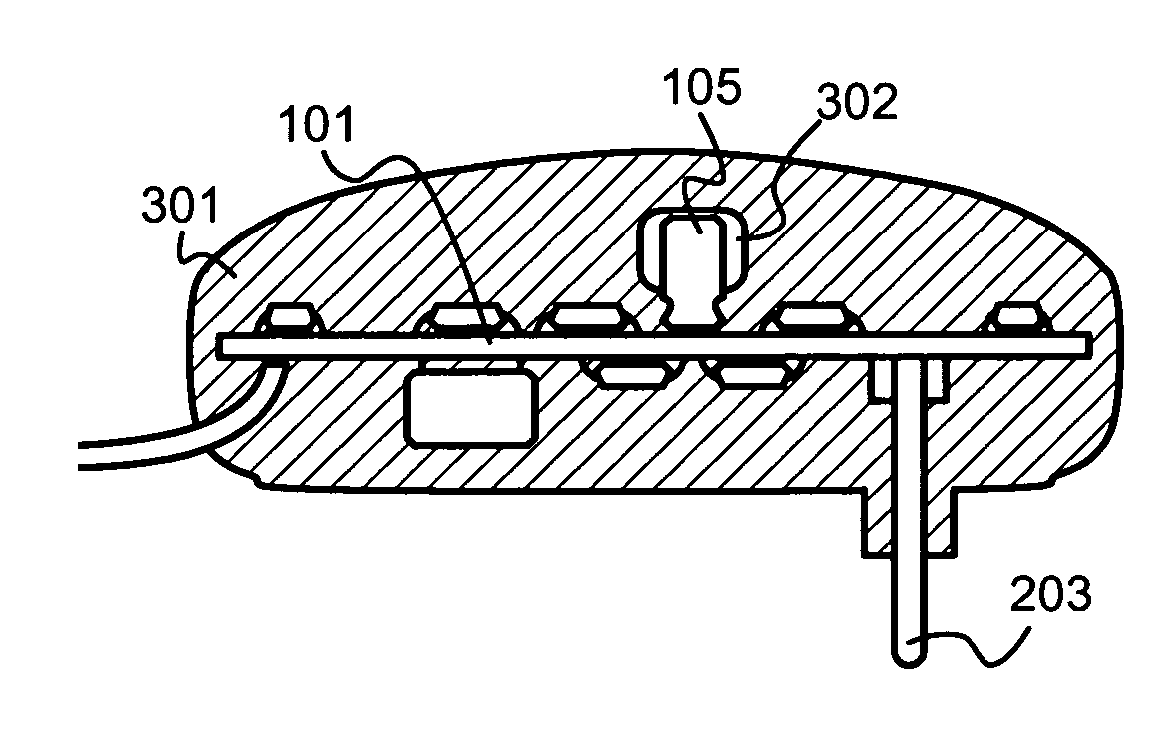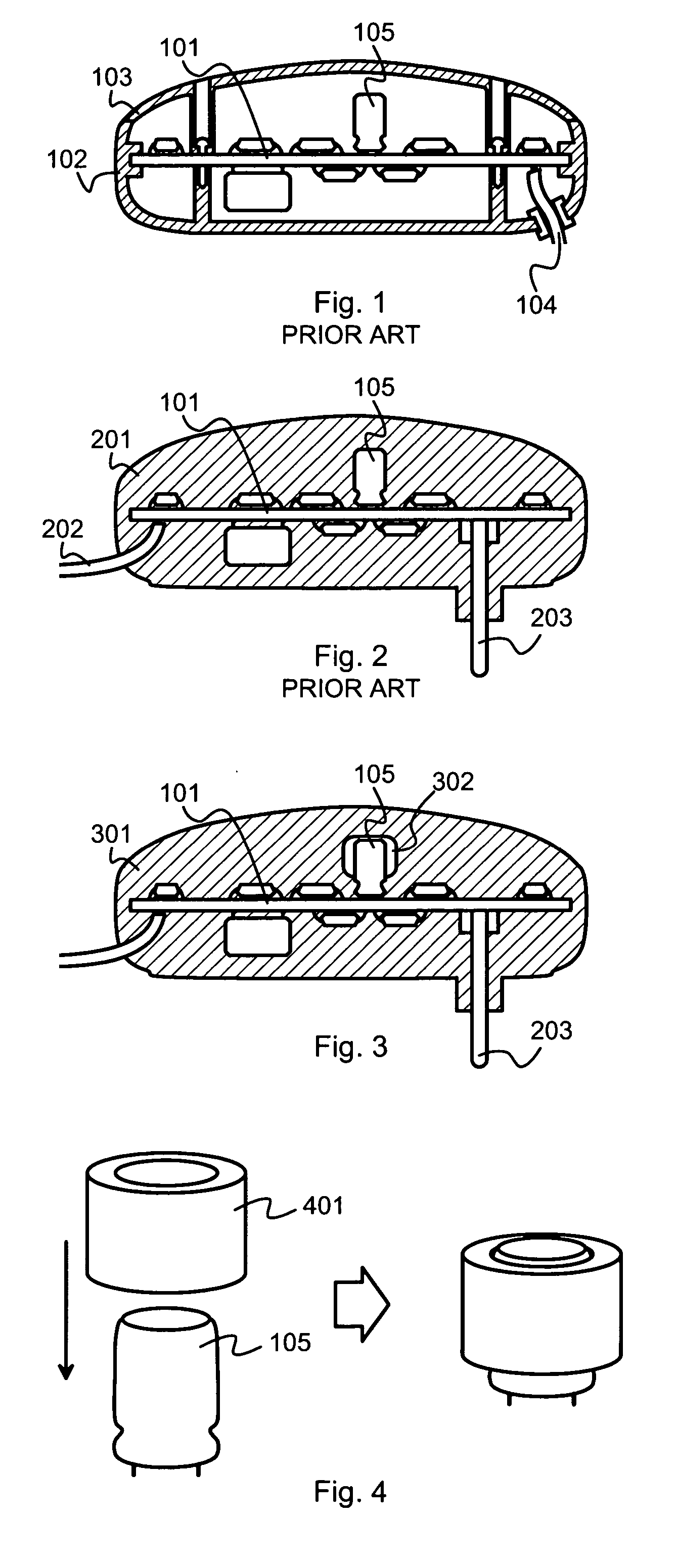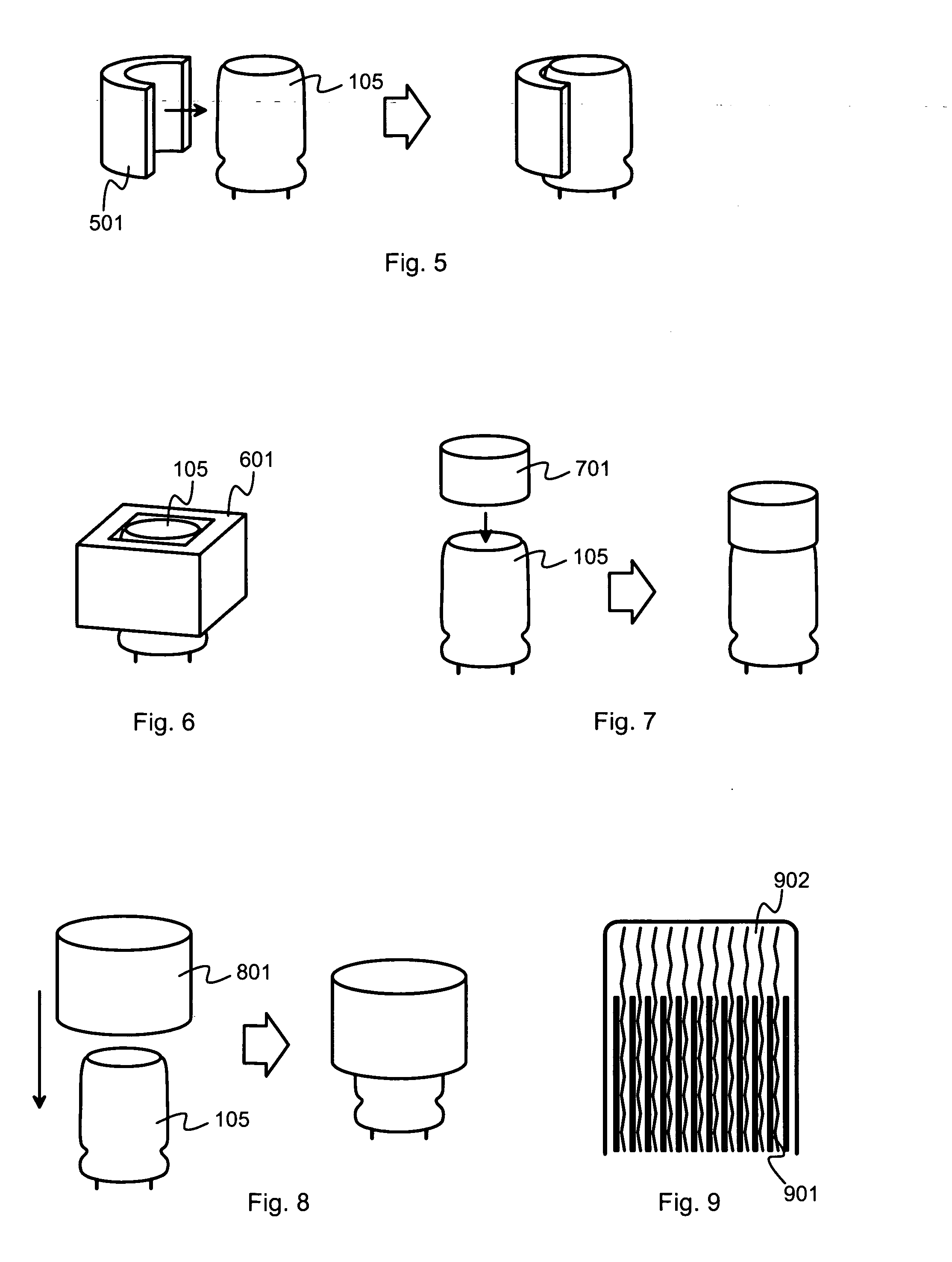Protection of an inmoulded electric appliance against explosion
an inmoulded electric appliance and explosion-proof technology, applied in the direction of casings/cabinets/drawers, cell components, casings/cabinets/drawers, etc., can solve the problems of affecting the operation of the electric appliance, the electrolyte inside the electric appliance begins to vaporize, and the vulnerability of the explosion, so as to reduce the risk of explosion, and reduce the effect of explosion
- Summary
- Abstract
- Description
- Claims
- Application Information
AI Technical Summary
Benefits of technology
Problems solved by technology
Method used
Image
Examples
Embodiment Construction
[0037] In the following description we will mainly focus on inmoulded solutions, but the same aspects of the invention are readily applicable also to potted electric appliances.
[0038]FIG. 3 illustrates schematically, in partial cross section, an electric appliance which comprises a component part 101 and a moulded part 301. Among the components of the component part 101 there is an electrolytic capacitor 105. The moulded part 301 has been moulded around the component part 101 so that the outer surface of the moulded part 301 constitutes a major part of the outer surface of the whole electric appliance. A part at which the outer surface of the electric appliance comprises something else is for example at the connector pins 203, which enable sticking the electric appliance into a wall socket like a wall plug.
[0039] Since the moulded part 301 has been moulded around the component part 101, it naturally contains an internal “cavity” of the size and shape of the component part 101. How...
PUM
| Property | Measurement | Unit |
|---|---|---|
| thickness | aaaaa | aaaaa |
| elastic | aaaaa | aaaaa |
| pressure | aaaaa | aaaaa |
Abstract
Description
Claims
Application Information
 Login to View More
Login to View More - R&D
- Intellectual Property
- Life Sciences
- Materials
- Tech Scout
- Unparalleled Data Quality
- Higher Quality Content
- 60% Fewer Hallucinations
Browse by: Latest US Patents, China's latest patents, Technical Efficacy Thesaurus, Application Domain, Technology Topic, Popular Technical Reports.
© 2025 PatSnap. All rights reserved.Legal|Privacy policy|Modern Slavery Act Transparency Statement|Sitemap|About US| Contact US: help@patsnap.com



